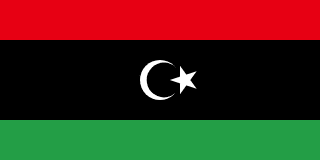Libya - Economy

How is the economy of Libya? Based on the information we have, Libya has a upper middle-income, fossil fuel-based North African economy; 31% economic contraction due to COVID-19 and 2020 oil blockade; reduced government spending; central bank had to devalue currency; public wages are over 60% of expenditures. Key agricultural products in this country include: potatoes, onions, watermelons, tomatoes, dates, olives, milk, chicken, wheat, vegetables (2023).
More about the economy of Libya
| Labor force | 2.585 million (2024 est.) |
|---|---|
| Industrial production growth rate | -5.8% (2024 est.) |
| Industries | petroleum, petrochemicals, aluminum, iron and steel, food processing, textiles, handicrafts, cement |
| Population below poverty line | |
| Taxes and other revenues | |
| Fiscal year | |
| Exchange rates | |
| Currency | Libyan dinars (LYD) per US dollar - |
| Exchange rates 2024 | 4.832 (2024 est.) |
| Exchange rates 2023 | 4.813 (2023 est.) |
| Exchange rates 2022 | 4.813 (2022 est.) |
| Exchange rates 2021 | 4.514 (2021 est.) |
| Exchange rates 2020 | 1.389 (2020 est.) |
| Reserves of foreign exchange and gold | |
| Reserves of foreign exchange and gold 2024 | $92.894 billion (2024 est.) |
| Reserves of foreign exchange and gold 2023 | $92.427 billion (2023 est.) |
| Reserves of foreign exchange and gold 2022 | $86.683 billion (2022 est.) |
| Current account balance | |
| Current account balance 2023 | $1.865 billion (2023 est.) |
| Current account balance 2022 | $9.607 billion (2022 est.) |
| Current account balance 2021 | $5.675 billion (2021 est.) |
| Public debt | |
| Public debt 2016 | 7.5% of GDP (2016 est.) |
| Budget | |
| Revenues | $28.005 billion (2019 est.) |
| Expenditures | $37.475 billion (2019 est.) |
| Budget surplus (+) or deficit (-) | |
| Remittances | |
| Remittances 2023 | 0% of GDP (2023 est.) |
| Remittances 2022 | 0% of GDP (2022 est.) |
| Remittances 2021 | 0% of GDP (2021 est.) |
| Imports | |
| Imports 2023 | $33.284 billion (2023 est.) |
| Imports 2022 | $27.872 billion (2022 est.) |
| Imports 2021 | $25.406 billion (2021 est.) |
| Imports (partners) | China 17%, Turkey 15%, Italy 8%, UAE 8%, Egypt 8% (2023) |
| Comodities Imports force | refined petroleum, broadcasting equipment, tobacco, garments, cars (2023) |
| Exports | |
| Imports 2023 | $33.284 billion (2023 est.) |
| Imports 2022 | $27.872 billion (2022 est.) |
| Imports 2021 | $25.406 billion (2021 est.) |
| Exports (partners) | Italy 23%, Germany 15%, Spain 9%, France 7%, China 6% (2023) |
| Comodities Exports force | crude petroleum, natural gas, refined petroleum, gold, scrap iron (2023) |
| Real GDP (purchasing power parity) | |
| Real GDP (purchasing power parity) 2024 | $90.609 billion (2024 est.) |
| Real GDP (purchasing power parity) 2023 | $91.161 billion (2023 est.) |
| Real GDP (purchasing power parity) 2022 | $82.756 billion (2022 est.) |
| GDP (official exchange rate) | $46.636 billion (2024 est.) |
| Real GDP Per capita | |
| Real GDP per capita 2024 | $12,300 (2024 est.) |
| Real GDP per capita 2023 | $12,500 (2023 est.) |
| Real GDP per capita 2022 | $11,500 (2022 est.) |
| GDP - composition, by sector of origin | |
| Agriculture | 1.7% (2024 est.) |
| Industry | 68.3% (2024 est.) |
| Services | 34.3% (2024 est.) |
| GDP - composition, by end use | |
| Household consumption | 32.7% (2024 est.) |
| Government consumption | 36.7% (2024 est.) |
| Investment in fixed capital | 14.8% (2024 est.) |
| Investment in inventories | 0% (2024 est.) |
| Exports of goods and services | 74.8% (2024 est.) |
| Imports of goods and services | -59.1% (2024 est.) |
| Unemployment rate | |
| Unemployment rate 2024 | 18.7% (2024 est.) |
| Unemployment rate 2023 | 18.8% (2023 est.) |
| Unemployment rate 2022 | 19.3% (2022 est.) |
| Youth unemployment rate (ages 15-24) | |
| Total | 49.5% (2024 est.) |
| Male | 41.5% (2024 est.) |
| Female | 68.8% (2024 est.) |
All Important Facts about Libya
Want to know more about Libya? Check all different factbooks for Libya below.









